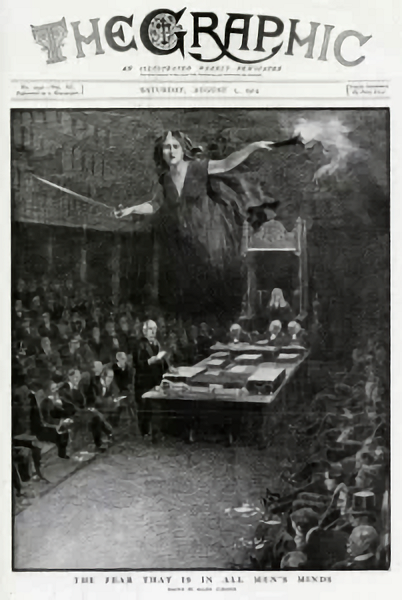The Graphic was a British weekly illustrated newspaper first published on 4 December 1869.[1] It was established by the wood-engraver and water-colour artist William Luson Thomas as a rival to the popular Illustrated London News,[2] but unlike the latter also included some works of fiction, and from 1873 began serialising novels, including Montezuma’s DaughterNovel by H. Rider Haggard published in 1893, the last of his best work. by H. Rider Haggard, When the Sleeper Awakes by H. G. Wells, and The Mayor of Casterbridge by Thomas Hardy.[3]
The newspaper was an immediate success. Among its many admirers were Vincent Van Gogh, and the Bavarian-born British painter Hubert von Herkomer, who wrote that Thomas “did more … than improve illustrated journalism, he influenced English art”. The Graphic presented artists with a new opportunity to explore social subjects, and its published images of the lives of the poor made it “a catalyst for the development of social realism in British art.”[2]
The Graphic was retitled National Graphic from 28 April 1932, under which banner it continued to be published weekly until 14 July 1932, when it was merged with The SphereBritish weekly illustrated newspaper published from 1900 to 1964..[3]
Editors
- H. Sutherland Edwards (1869–1870)
- Arthur Locker (1870–1891)
- Thomas Heath Joyce (1891–1906)
- W. Comyns Beaumont (1906–1909)
- John M. Bulloch (1909–1924)
- Frank Le Couteur (1924–1926)
- Alan J. Bott (1926–1932)

